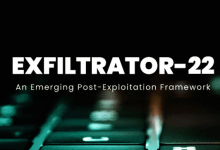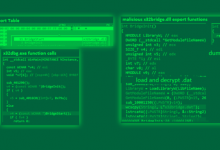Emerging Technologies and the Battle against Data Leaks
In today’s digital world, data leaks have become a major concern for organizations of all sizes and industries. With cyberattacks becoming more sophisticated and unpredictable, staying ahead of cyber threats has become a top priority for businesses. Thankfully, emerging technologies are now offering powerful solutions to help in the battle against data leaks.
One of the most promising technologies in this fight is artificial intelligence (AI). AI-powered systems can analyze huge volumes of data in real-time, enabling organizations to detect and respond to potential data leaks quickly. It can also identify patterns and anomalies in network traffic, user behavior, and data access, helping in identifying any suspicious activities that could lead to a data breach.
Machine learning algorithms, a subset of AI, can continuously learn from previous patterns and experiences to enhance their detection capabilities. They can identify and flag potential data leak incidents by monitoring files, emails, and user activities. These algorithms can also predict future threats by analyzing historical data, therefore enabling organizations to mitigate risks before they turn into actual data breaches.
Another emerging technology that offers immense potential against data leaks is blockchain. Traditionally known for supporting cryptocurrencies like Bitcoin, blockchain can be applied to secure data and prevent unauthorized access. By storing data across a distributed network of computers, blockchain ensures that the data is not controlled by a single entity, making it extremely difficult for attackers to manipulate or alter the information.
Furthermore, blockchain technology provides a transparent and tamper-proof chain of custody for sensitive data, allowing organizations to track data access and modifications. Any unauthorized attempt to tamper with the data will be recorded, making it easier to investigate and identify potential data leaks.
Moreover, blockchain can also facilitate secure data sharing between multiple parties. Through permissioned blockchains, organizations can establish a trusted network where data can be shared securely without the risk of unauthorized access or data leakage.
Additionally, encryption technologies are playing a crucial role in protecting data and preventing leaks. Encryption encodes information, making it unreadable and useless to unauthorized individuals. End-to-end encryption, in particular, ensures that data remains encrypted from the point of creation to the point of consumption, leaving it vulnerable only during transmission. Encrypted data is useless to attackers without the corresponding decryption keys, making it an essential tool in data leak prevention.
Lastly, data leakage prevention (DLP) solutions are also emerging as an effective way to battle against data leaks. DLP solutions aim to identify, monitor, and protect sensitive data from unauthorized access or exfiltration. They use a combination of technologies, including AI, machine learning, and encryption, to detect and prevent data leaks through various channels such as emails, USB drives, cloud storage, and network vulnerabilities.
These DLP solutions can classify and tag sensitive data, monitor data movement within and outside the organization, and enforce policies to prevent unauthorized data sharing or leakage. They can also control access to sensitive data based on user roles and permissions, reducing the risk of data leaks due to human error or malicious intent.
In conclusion, the battle against data leaks is becoming increasingly challenging, but emerging technologies are offering promising solutions to mitigate risks. Artificial intelligence, blockchain, encryption technologies, and data leakage prevention solutions are just a few examples of how organizations can enhance their cybersecurity posture and protect their sensitive data from falling into the wrong hands. By leveraging these technologies, businesses can stay ahead of cyber threats and ensure the safety and integrity of their valuable data.




